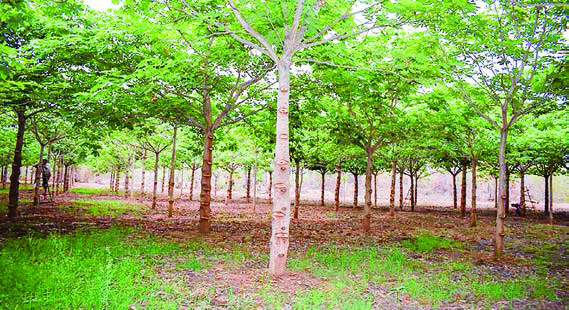30 September
THE yield of sterculia gum, locally known as Saekalamae, has registered a drop in the tap-ping season this year owing to poor rainfall, said U Zaw Min, the chair of the Sagaing Region Sterculia Gum Producers and Exporters Association.
“Lack of rainfall has led to a 20 per cent drop in yield. Last year, an acre produced 10 viss of gum (a viss is approximately equal to 1.6 kg). This year, only 8 viss of gum was produced. Despite the fall in yield, the price of sterculia gum is on the high side. I have 30 acres of sterculia farms, but only two can produce gum,” said U Chit Htay, a grower from Gwaypinkwin village, Butalin Township. The herb is naturally found across the country. Growers from Mandalay, Sagaing, Magway, Bago, and Taninthayi regions are cultivating the gum on a commercial scale. There are 13,633 acres of commercial gum plantations, most of them based in Mandalay and Sagaing regions.
Myanmar gum is currently being exported to China. Japan has also shown interest in it, but it wants only organically farmed gum. Gum producer bodies have submitted a report to the Commerce Ministry, seeking its help to link them with more external markets.
Sterculia gum or Karaya gum is grown in many countries. While the gum originating from many countries can only be used as an industrial raw material, the gum produced in Myanmar can be eaten. There-fore, there is a high demand for Myanmar’s gum. To supply gum to other countries, farmers need to maintain high quality.
Win Oo/ Ko Khant (Translated by Ei Myat Mon)


